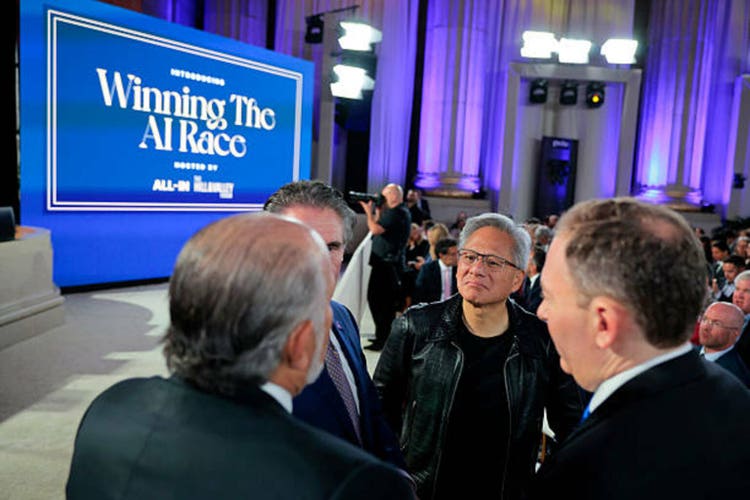The stock market went nuts Monday, then crashed back to reality Tuesday, which perfectly captures how this whole deal makes no sense. It took Wall Street 24 hours to realize NVIDIA isn't actually investing in anything - they're just creating a circular money loop to pump their revenue numbers.
There Isn't Enough Power for This Nonsense
They're talking about 10 gigawatts of data center capacity - that's like 8 or 10 nuclear reactors running at full capacity. Here's the problem: there literally isn't enough electricity available. I learned this the hard way when our company tried to expand our GPU cluster from like 64 H100s to 256 - PG&E told us we'd need to wait 18 months for grid upgrades and pay over $2M in infrastructure costs. The US Energy Information Administration shows the power grid is already struggling with existing AI infrastructure, while data center power demand studies indicate NVIDIA's 10GW more would strain capacity nationwide.
Wedbush Securities is cheerleading this as "the next stage of AI revolution," but they're ignoring basic physics. You can't just wish electricity into existence because you have a hundred billion dollar check. I've dealt with this shit firsthand - each H100 pulls like 700W peak, plus cooling overhead means you're looking at ~1kW per chip. NVIDIA's technical specifications confirm these power requirements, while data center cooling experts estimate total infrastructure power needs at 2-3x the compute load. That's like 10 million kilowatts just for the GPUs, not counting servers, networking, or keeping the damn things from melting.
The Energy Crisis Nobody Wants to Discuss
CNBC's analysis reveals the deal's biggest problem: there isn't enough power. Building that much data center capacity requires securing power equivalent to multiple nuclear plants, but the US electrical grid is already struggling with existing AI infrastructure demands. Power grid infrastructure reports show capacity constraints nationwide, while renewable energy transition studies indicate the timeline conflicts with clean energy goals.
This isn't just a technical challenge - it's a fundamental constraint on AI growth that the industry has largely ignored. NVIDIA and OpenAI's timeline assumes they can solve power infrastructure problems that utility companies have struggled with for decades.
The power requirements also raise environmental questions. Even with renewable energy commitments, that much continuous power consumption would represent a significant new burden on the electrical grid at exactly the moment when climate goals require reducing energy consumption.
"Financial Theater" Allegations Mount
Financial Theater critics and Cryptopolitan's analysis call the announcement "financial theater" - a carefully orchestrated move to boost both companies' valuations without creating genuine economic value.
The theory goes like this: NVIDIA invests a hundred billion in OpenAI, most of which flows right back to NVIDIA as hardware purchases. It's the corporate equivalent of paying yourself for your own services. I've seen this exact bullshit before - remember when Oracle used to "invest" in startups who then magically needed Oracle databases? OpenAI's valuation increases based on the massive investment, while NVIDIA's revenue grows from the guaranteed sales. Both companies benefit from inflated metrics while creating minimal real value. It's probably accounting theater disguised as innovation, but I could be missing something.
This criticism gained credibility when BlackRock's Jay Jacobs defended the deal, noting it "makes sense" for AI investment overall - exactly the kind of vague justification that raises red flags for market manipulation.
Market Reality Check
Anyway, enough ranting about power grids. Tuesday's market retreat reflected growing investor skepticism. NVIDIA shares fell almost 3% as traders reconsidered whether the OpenAI deal represented genuine growth or circular investment. The tech-heavy NASDAQ declined as broader AI optimism faltered.
Financial market analysts noted that most Magnificent Seven stocks slipped on Tuesday, suggesting investor concerns extend beyond NVIDIA to the entire AI sector's valuation levels.
Federal Reserve Chair Jerome Powell's warning about "highly valued markets" added to the selling pressure, with investors questioning whether AI stocks have become divorced from fundamental economics.
The Quantum Computing Angle
Interestingly, NVIDIA is simultaneously betting on quantum computing despite doubts about near-term commercial viability. This dual investment strategy - massive AI infrastructure plus speculative quantum technology - suggests NVIDIA is hedging its bets on multiple future computing paradigms.
The quantum investment, while much smaller than the OpenAI deal, indicates NVIDIA recognizes that current AI approaches may hit fundamental limitations. The company appears to be positioning for multiple technological scenarios rather than betting everything on scaled-up classical AI.


